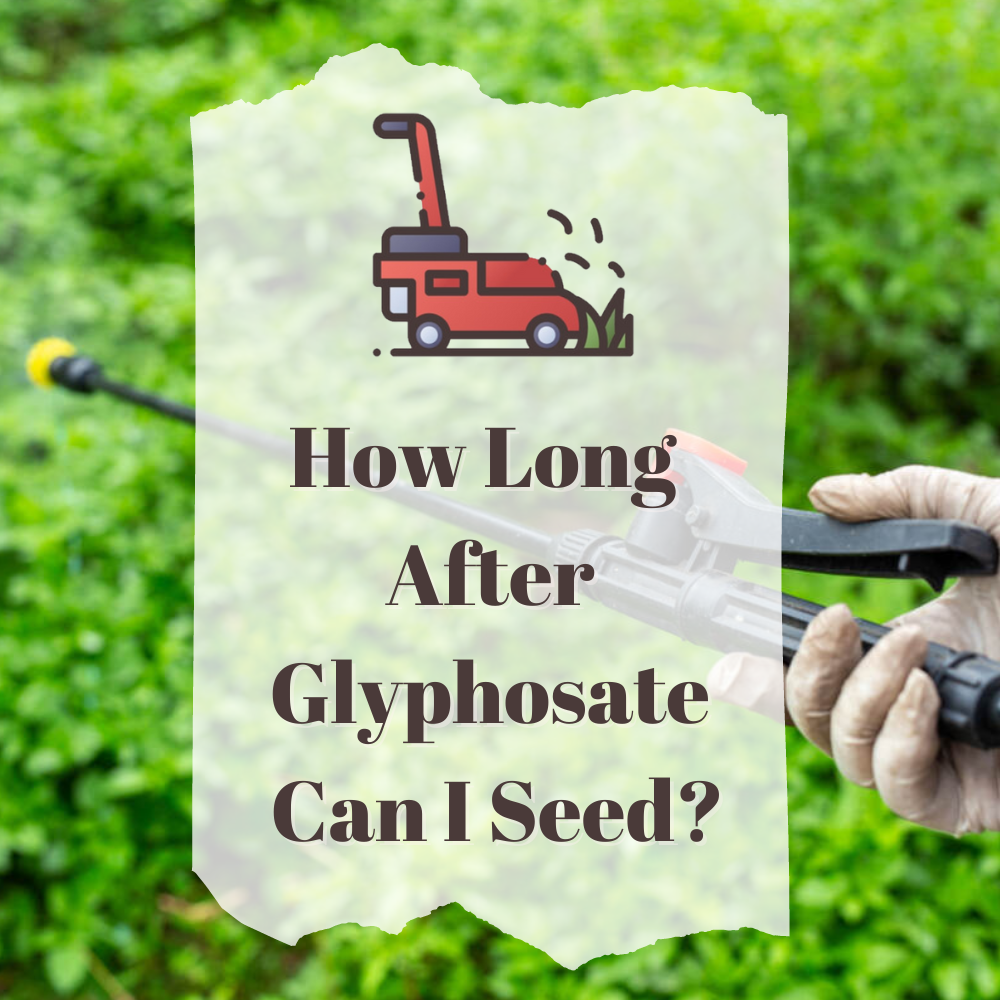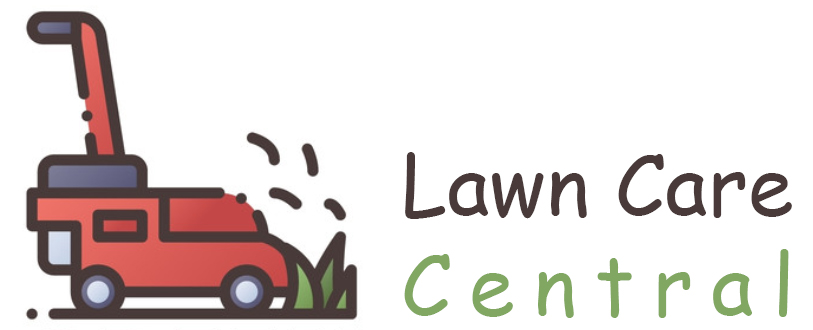
As a farmer and a gardener, I understand the importance of using herbicides like glyphosate to maintain a healthy landscape. Glyphosate is a widely used herbicide that effectively kills weeds and other unwanted plants, making it an essential tool for crop management.
However, before planting new seeds, it is crucial to understand the waiting period needed after glyphosate use to ensure successful growth.
Glyphosate is a systemic herbicide that works by inhibiting the growth of specific enzymes in plants, leading to their death. It is commonly used in agriculture, forestry, and landscaping to control weeds and other unwanted vegetation.
While glyphosate is effective in killing weeds, it can also have adverse effects on the growth of new plants, which is why it is essential to understand the waiting period needed before planting new seeds.
In this article, we will explore the factors that affect seed planting after glyphosate use and provide recommendations for the waiting periods for different crops and plants.
Understanding Glyphosate and its Effects
You’ll want to understand the effects of glyphosate before planting your seeds.
Glyphosate is a powerful herbicide that is used to kill weeds and unwanted vegetation. It works by interfering with the shikimic acid pathway in plants, which is essential for the production of certain amino acids. This ultimately leads to the death of the plant within a few days of application.
Glyphosate is a non-selective herbicide, meaning it can kill any plant it comes in contact with. This includes both weeds and desirable plants, such as the ones you want to grow in your garden.
Therefore, it’s important to wait until the glyphosate has completely broken down before planting your seeds. This can take anywhere from a few days to several weeks, depending on various factors such as the weather conditions and the type and amount of glyphosate used.
Factors that Affect Seed Planting after Glyphosate
When you’re ready to plant your seeds, there are a few factors to consider that can affect their success after using glyphosate.
First, it’s important to wait for a certain amount of time after applying glyphosate before planting your seeds. The waiting period can vary depending on a number of factors such as the type of crop, the glyphosate formulation used, and the environmental conditions.
In general, it’s recommended to wait for at least 7 days after using glyphosate before planting seeds, but this can range anywhere from 3 to 14 days.
Second, it’s important to consider the residual effects of glyphosate on the soil. Glyphosate can remain active in the soil for weeks to months after application, which can affect the growth and development of your seeds.
To minimize the impact of glyphosate on your seeds, it’s recommended to plant them in a different area of the field that was not treated with glyphosate or to use a different herbicide before planting.
Additionally, it’s important to monitor your seeds closely after planting to ensure that they are growing properly and to address any issues that may arise.

Waiting Periods for Different Crops and Plants
If you’re wondering how long you’ll need to wait before planting different crops and plants, let’s take a look at the recommended waiting periods.
For corn, soybeans, and wheat, the waiting period after glyphosate application is typically 7 days. This is because these crops have a relatively high tolerance to glyphosate and can recover quickly. However, other crops such as cotton, sunflowers, and peanuts require a longer waiting period of up to 14 days. This is because they are more sensitive to glyphosate and need more time to recover.
For vegetables and fruits, the waiting period may vary depending on the specific type of crop. For example, lettuce and spinach may require a waiting period of 3 to 7 days, while tomatoes and peppers may need up to 14 days.
It is important to consult the label of the glyphosate product you are using for specific waiting periods for each crop. Additionally, factors such as weather conditions and soil type may also affect the recovery time of crops after glyphosate application.
Glyphosate Products and their Specific Recommendations
Looking for the best glyphosate product to use on your crops and plants? Check out these specific recommendations for each product.
Roundup ProMax has a waiting period of only 7 days before planting most crops. However, for some crops like tomatoes, peppers, and eggplants, the waiting period is extended to 14 days.
Roundup PowerMAX has a waiting period of 14 days for most crops, but for some like corn and soybeans, it can be as short as 4 days.
Roundup WeatherMAX has a waiting period of 4 days for most crops, but for some like cotton and peanuts, it can be as long as 14 days.
It is important to note that these waiting periods are specific to each product and crop, and should be followed strictly to avoid any negative effects on the growth and development of the plants. It’s also important to read and follow the label instructions carefully, as they provide detailed information on the proper use and application of the product.
By following these recommendations and instructions, you can ensure the best results for your crops and plants.
Weather Conditions and their Impact on Seed Planting
Get ready to learn how weather conditions can affect the planting of your seeds! As we all know, the weather plays a crucial role in the growth and development of plants. This is why it’s essential to consider the weather conditions before planting your seeds.
The right weather conditions can make a significant impact on the germination rate, growth rate, and overall health of your plants. The first thing to consider is the temperature. Different plants require different temperature ranges to grow successfully. Some plants thrive in warm weather, while others prefer cooler temperatures.
It’s crucial to check the weather forecast for your area and choose the right time to plant your seeds. If the temperature is too high, it can cause the seeds to dry out and die. On the other hand, if the temperature is too low, the seeds may not germinate at all.
Therefore, it’s essential to choose the right time to plant your seeds to ensure optimal growth and development.

Best Practices for Using Glyphosate and Planting Seeds
Before you start planting your seeds, it’s important to know the best practices for using glyphosate to ensure the health of your plants. Glyphosate is a herbicide commonly used to kill weeds and other unwanted vegetation. When used correctly, it can be a very effective tool for preparing your soil for planting. However, it’s important to follow the manufacturer’s directions carefully and take certain precautions while using glyphosate.
First and foremost, it’s important to wait until the glyphosate has fully dried before planting your seeds. This can take anywhere from a few hours to a few days, depending on the weather conditions.
You should also avoid spraying glyphosate on windy days, as this can cause it to drift onto nearby vegetation and cause damage.
Finally, it’s important to wear protective clothing, including gloves, long sleeves, and pants, while using glyphosate to avoid any potential exposure.
By following these best practices, you can ensure that your seeds will have the best chance of germinating and growing into healthy plants.
Ensuring Healthy and Productive Growth after Glyphosate Use
To ensure the health and productivity of your plants, it’s important that you take the necessary steps for proper post-treatment care following the use of glyphosate.
One of the most important steps is to wait the appropriate amount of time before seeding. Glyphosate can remain active in the soil for a certain period, which can vary depending on various factors such as the type of soil and weather conditions. As a general rule, it’s recommended to wait at least 7 days before planting any seeds.
In addition to waiting the appropriate amount of time, it’s important to provide the right conditions for your seeds to grow. This includes ensuring that your soil is properly prepared and that there is enough moisture in the soil.
You can also consider using seed treatments to boost your plant’s immunity and increase the likelihood of successful growth.
By taking these steps, you can help ensure that your plants grow strong and healthy, even after the use of glyphosate.
Conclusion
Overall, it’s important to understand the potential effects of glyphosate on soil and plant growth, as well as the waiting periods and recommendations for planting seeds after its use.
While glyphosate can be a useful tool in weed control, it’s important to follow label instructions and take into account factors such as weather and soil conditions.
By being mindful of these factors and following best practices, it’s possible to achieve healthy and productive growth even after using glyphosate.
In conclusion, as someone who frequently uses glyphosate in my garden, I know the importance of taking a responsible approach to its use.
By understanding its effects and waiting periods, as well as utilizing proper techniques for planting seeds, I can ensure that my garden remains healthy and productive.
By remaining informed and diligent in my use of glyphosate, I can continue to enjoy the benefits of this powerful herbicide without compromising the long-term health of my plants and soil.
